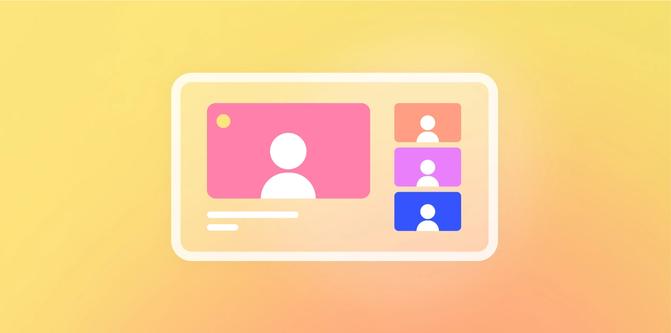Mastering Meeting Etiquette: 20 Rules to Elevate Your Meeting Game

Meeting etiquette just got easier.
Whether you love ‘em or hate ‘em, there is one thing that we argue can make a bad meeting even worse: bad manners. Bad meeting manners encompasses a lot of things, from picking your nose to saying something problematic. Meetings are a tough thing to navigate–a lot of times filled with intense stress, pandering eyes, and annoyed sighs. There are a lot of meeting checklists out there that cover some pretty impactful stuff like presentation templates or check-in questions. These things are vital, but navigating meeting etiquette is the bedrock of a successful, rewarding, and comfortable meeting.
Meetings etiquette in a modern world
Recent years have witnessed significant shifts in the future of work, particularly with the emergence of asynchronous and hybrid work. As a one-two punch, following those initial adaptations, generative AI has made its way into the hands of both consumers and businesses, revolutionizing our approach to productivity. Take a look back at the last few years. Think about how your daily work has changed, what tools you’ve adapted or abandoned, how your efficiency has been reshaped.
The rise of remote work and the proliferation of collaboration tools have redefined the meeting landscape. These new etiquette tips will equip you to thrive in the asynchronous and digital age, ensuring your meetings are productive and efficient, even when you're not physically present in the same room. In our experience, a lot of meetings are derailed because new meeting rules aren’t observed. Your work has changed, your meetings should, too:
- Embrace the meeting Assistant: Gone are the days of endless email chains trying to find a meeting time that works for everyone. Meeting assistants like Collato can streamline the scheduling process, saving you and your colleagues time and hassle. Collato is a game-changer for meetings and note taking because it’s your sidekick throughout the whole process. Collato attends your meetings and transcribes them, so you don’t have to worry about scribbling down every word. Then you can use those transcripts to create documents like meeting minutes. Want to add more than transcripts? Collato can also use audio recordings, photos of messy white boards, and handwritten notes to make polished meeting notes in seconds.
- Leverage transcripts for transparency and accountability: Meeting transcripts generated by AI assistants are a game-changer for modern meetings. These transcripts capture the key points discussed, decisions made, and action items assigned. This ensures everyone is on the same page and fosters accountability, as attendees can easily refer back to the transcript to refresh their memory or identify any outstanding tasks.
- Multilingual magic: AI-powered transcriptions are becoming increasingly sophisticated, even translating languages in real time. This is a boon for global meetings, where attendees may speak different languages. Real-time translation removes language barriers and ensures everyone can fully participate in the discussion, fostering a more inclusive and collaborative meeting environment.
- Share first, discuss later: In the fast-paced world of work, every minute counts. Consider distributing presentations, key points, and meeting agendas beforehand. This allows attendees to come prepared to discuss the information in more depth rather than spending half the meeting passively listening to a presentation. This shift allocates valuable meeting time for deeper discussion, brainstorming ideas, and problem-solving as a team.
- Be seen and be heard: Even if you're attending a meeting remotely, project a strong virtual presence. Actively participate in the conversation, respond to questions promptly and clearly, and use video chat whenever possible. Seeing your face and body language helps you connect with your colleagues and ensures you don't get lost in the digital ether.
- Avoid technical difficulties: Log in to online meetings a few minutes early. This allows you to troubleshoot any technical difficulties you might encounter, like ensuring your microphone and camera are working properly, or addressing any connection issues. Joining a meeting a few minutes early ensures a smooth start and avoids holding everyone else up while you resolve technical glitches. There is nothing worse than trying to log into a Zoom meeting that you’re late for, and need to update.
- Chat it up (productively): Many video conferencing platforms offer chat functions. Use these tools strategically to share links, ask quick questions for clarification, or provide additional information without interrupting the flow of the conversation. This can be a great way to stay engaged and contribute to the discussion without derailing the speaker's train of thought.
- App it Up: Keep Your Meeting Apps Updated for a Seamless Experience: There's nothing worse than being in the middle of a presentation when your video conferencing app decides to update. Keep your meeting apps updated to avoid technical glitches and ensure a smooth experience for yourself and your colleagues. Most apps will allow you to set automatic updates to avoid this disruption altogether.
- Please mute yourself: This golden rule prevents background noise from disrupting the meeting. When you're not actively speaking, mute your microphone. This eliminates any distracting background noise, like keyboard clicks or conversations happening in your physical space. It's also a good idea to unmute yourself audibly before speaking to avoid any awkward silence as attendees wait for you to come through.
- Please unmute yourself: Like the previous rule, failing to unmute your microphone is also a problem. It happens to the best of us. But it’s a best practice, every time you speak, to check if you’re muted or not. Please.
Remember, traditional etiquette still applies. While the rise of remote work has introduced new considerations, traditional meeting etiquette still applies in a hybrid environment. Whether you're attending a meeting in person or virtually, mute yourself when not speaking, avoid multitasking, and maintain a professional demeanor. This ensures a respectful and productive meeting experience for everyone involved.
Timeless meeting manners never go out of style
A lot has changed. But turns out, some of the oldest meeting etiquette rules are just as important now as they’ve always been. Before we take a look at meeting etiquette rules in the age of hybrid, AI-empowered work, let’s see how some of the oldest rules are still the most important.
- Be punctual: This one's a no-brainer. Arriving on time demonstrates respect for everyone's valuable time. Being late disrupts the flow of the meeting, throws off the schedule, and can create a sense of resentment among colleagues who made the effort to be prompt.
- Prepare: Don't be that person caught flat-footed when the discussion turns to your area of expertise. Review the meeting agenda beforehand, gather any necessary materials, and come ready to contribute. This demonstrates initiative and shows your colleagues that you value their time and the purpose of the meeting.
- Dress for success, even virtually: First impressions matter, even in the age of video conferencing. While the days of stuffy suits and ties might be over for many workplaces, professionalism in appearance is still important. Opt for business-appropriate attire on the top half, even if you're sporting comfy sweatpants on the bottom (a secret most remote workers share!). This small effort shows you take the meeting seriously and creates a sense of occasion.
- Engage in the conversation, but be mindful of interruptions: Don't be a wallflower who fades into the background. Actively listen to the conversation, ask thoughtful questions that demonstrate you've been paying attention, and share your insights when appropriate. However, avoid interrupting others mid-sentence or dominating the conversation. A good rule of thumb is to wait for a natural pause before interjecting, and try to keep your contributions concise and relevant to the topic at hand.
- Respectful rebuttal is an art: Disagreeing with a colleague is perfectly normal and can even be productive if handled respectfully. Avoid interrupting or launching into personal attacks. Focus on presenting your perspective constructively, using phrases like "I see your point, but have you considered..." or "That's an interesting approach, perhaps we could also explore..."
- Cultural cues count: Be mindful of cultural sensitivities, especially in global meetings. A simple handshake that's perfectly normal in your culture might be considered rude in another. Do some research on etiquette norms beforehand and adapt your communication style accordingly. This demonstrates respect for your colleagues from diverse backgrounds and fosters a more inclusive meeting environment.
- Active listening pays dividends: Active listening is the cornerstone of effective communication. Give your full attention to the speaker. Make eye contact (virtually, of course!), avoid distractions like checking your phone or doodling on a notepad, and avoid interrupting. Nodding occasionally and leaning in slightly can show you're engaged and interested in what the speaker has to say.
- Stay present: Multitasking during meetings is a recipe for disaster. Put away your phone, silence notifications, and focus on the meeting at hand. Important information or decisions could be missed while you're checking your email or catching up on social media.
- Follow up: After the meeting, take a few minutes to send a quick thank you email to the organizer and any other attendees you interacted with. Briefly reiterate any action items assigned to you and inquire about any next steps. This demonstrates professionalism and follow-through, and ensures everyone is on the same page moving forward.
- Observe body language, it speaks volumes: Nonverbal cues can communicate a lot, even in a virtual setting. Pay attention to body language to gauge understanding and engagement. Are your colleagues leaning in attentively, or are they slumped in their chairs with glazed expressions? Observing these nonverbal cues can help you adjust your communication style or pace to better connect with the audience.
Bonus Tip: Kindness is Always in Fashion
Meetings can be stressful, especially when deadlines loom and tensions run high. However, a little kindness goes a long way. Acknowledge others' contributions, be patient with technical difficulties, and maintain a positive and respectful demeanor. This will create a more welcoming and collaborative meeting environment, where everyone feels comfortable sharing their ideas and participating in the discussion.
By mastering these classic and modern meeting etiquette tips, you can transform yourself from a passive attendee to a meeting rockstar. You'll impress your colleagues, contribute meaningfully to discussions, and ensure your meetings are productive and efficient, whether you're in the conference room or collaborating from your home office. Remember, meetings are a chance to connect, collaborate, and achieve great things.






